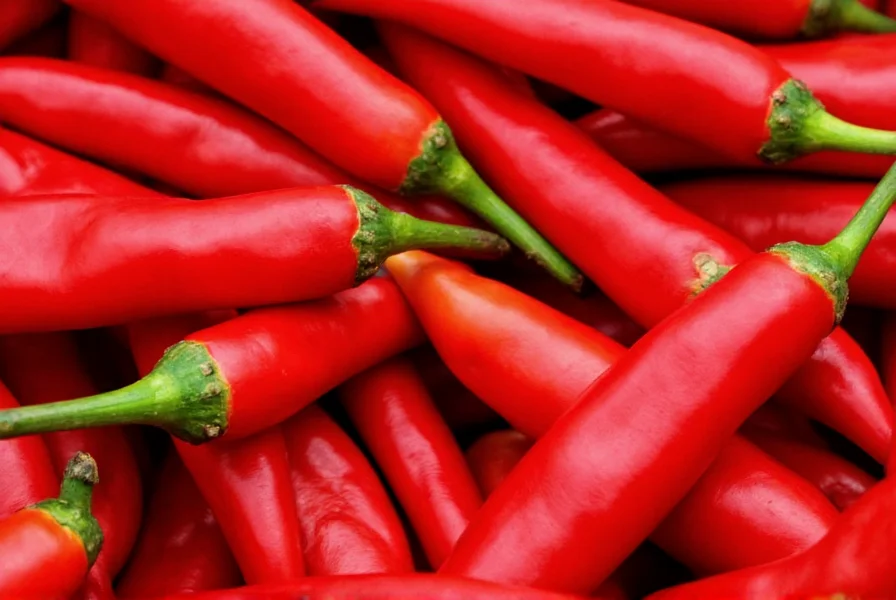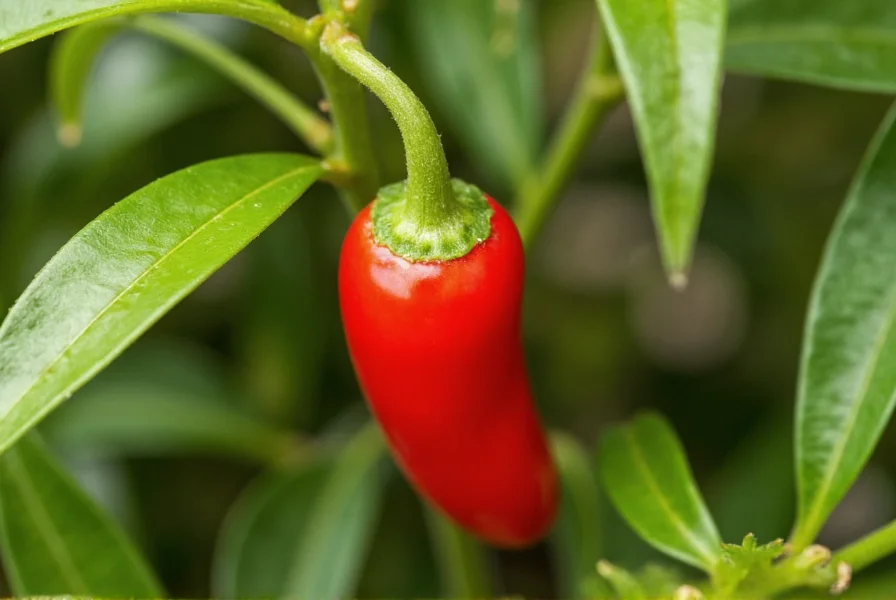When someone turns red as a chili pepper, they experience a dramatic facial flush that's impossible to ignore. This expression goes beyond ordinary blushing to convey an intense, almost theatrical reaction. The idiom works because chili peppers—especially varieties like cayenne or bird's eye chilies—exhibit a striking, uniform red hue when fully ripe, making them perfect visual references for extreme facial reddening.
Understanding the Idiom's Nuances
While many idioms describe blushing (turn beet red, flush crimson), turn red as a chili pepper carries specific connotations:
- Implies an immediate, dramatic color change rather than a gradual blush
- Suggests intense emotional arousal—typically embarrassment or anger
- Carries cultural associations with heat and spice, subtly connecting physical reaction to emotional "temperature"
- Often used in literary or expressive contexts rather than casual conversation
| Expression | Intensity Level | Common Contexts |
|---|---|---|
| Turn red as a chili pepper | Extreme | Literary, dramatic situations |
| Turn beet red | High | Everyday speech, storytelling |
| Blush slightly | Low | Subtle emotional reactions |
Historical Origins and Evolution
Linguistic evidence suggests turn red as a chili pepper meaning emerged in English during the 20th century as global trade made chili peppers more recognizable. Unlike older blush idioms referencing beets or tomatoes (common in European agriculture), this expression reflects increased cultural exposure to New World crops.
Chili peppers became potent metaphors because:
- They produce consistent, vibrant red pigmentation when ripe
- They're associated with heat and intensity—paralleling emotional states
- They're universally recognizable across many cultures

Proper Usage Examples
Understanding how to use turn red as a chili pepper correctly requires attention to context. Here are authentic examples:
"When Maria realized she'd accidentally insulted the guest of honor, she turned red as a chili pepper and stammered an apology."
"The politician turned red as a chili pepper when confronted with evidence contradicting his earlier statements."
Notice how both examples describe sudden, extreme reactions to emotionally charged situations. This idiom works best when:
- The reaction is visibly dramatic
- The cause involves social embarrassment or anger
- You want to emphasize the intensity of the physical response
Common Misinterpretations to Avoid
Many people misunderstand turn red as a chili pepper vs turn beet red. Key distinctions:
- Chili pepper implies a bright, fiery red—think cayenne pepper intensity
- Beet red suggests a darker, deeper red like cooked beets
- Chili pepper conveys heat and immediacy, while beet red focuses purely on color
Another frequent error involves confusing this with expressions about actual chili pepper consumption. Turning red from eating spicy food describes a physiological reaction to capsaicin, while turning red as a chili pepper describes an emotional response using the pepper as visual metaphor.
Cultural Variations Across English-Speaking Regions
The turn red as a chili pepper expression usage varies geographically:
- American English: More common in literary contexts than casual speech
- British English: Often replaced with go puce or turn crimson
- Caribbean English: Frequently used with direct cultural connection to local chili varieties
- Indian English: Gaining popularity due to familiarity with chili peppers in daily life
Linguists note increased usage of this idiom in digital communication, where vivid descriptions compensate for lack of visual cues. Writers seeking how to describe someone turning red vividly often select this expression for its strong visual impact.
When This Idiom Works Best
Choose turn red as a chili pepper when you need to convey:
- Extreme emotional reactions—beyond ordinary embarrassment
- Immediate physical responses to shocking news or social faux pas
- Vivid descriptive writing where visual impact matters
- Cultural contexts where chili peppers have significance
For subtler reactions, consider alternatives like flush slightly or color faintly. Reserve this idiom for moments when the emotional intensity matches the vibrant red of a fully ripe chili.
What does 'turn red as a chili pepper' mean literally?
The phrase literally describes someone whose face becomes intensely flushed with a bright red color comparable to ripe chili peppers. It's not meant literally about consuming peppers, but uses the pepper's vivid color as a simile for extreme facial reddening from strong emotions.
Is 'turn red as a chili pepper' different from 'turn beet red'?
Yes, there are subtle differences. 'Turn red as a chili pepper' suggests a brighter, more fiery red with connotations of heat and intensity, while 'turn beet red' implies a deeper, darker red. The chili pepper version emphasizes dramatic, immediate reactions to strong emotions.
Can this idiom describe reactions to spicy food?
No, this is a common misunderstanding. While eating spicy food can make someone flush, 'turn red as a chili pepper' specifically describes emotional reactions using the pepper as visual metaphor, not physiological reactions to capsaicin. For food-related flushing, say 'turned red from eating spicy food' instead.
When should I use this idiom in writing?
Use this idiom when describing extreme, immediate emotional reactions where the facial flush is dramatically visible. It works best in literary contexts, storytelling, or when you need vivid description of someone's intense embarrassment, anger, or shock. Avoid using it for subtle or gradual blushing.
Are there cultural differences in how this idiom is understood?
Yes, the idiom appears more frequently in regions where chili peppers are culturally significant, like Latin America, the Caribbean, and parts of Asia. In British English, alternatives like 'go crimson' are more common. American English uses it primarily in descriptive writing rather than casual conversation.











 浙公网安备
33010002000092号
浙公网安备
33010002000092号 浙B2-20120091-4
浙B2-20120091-4